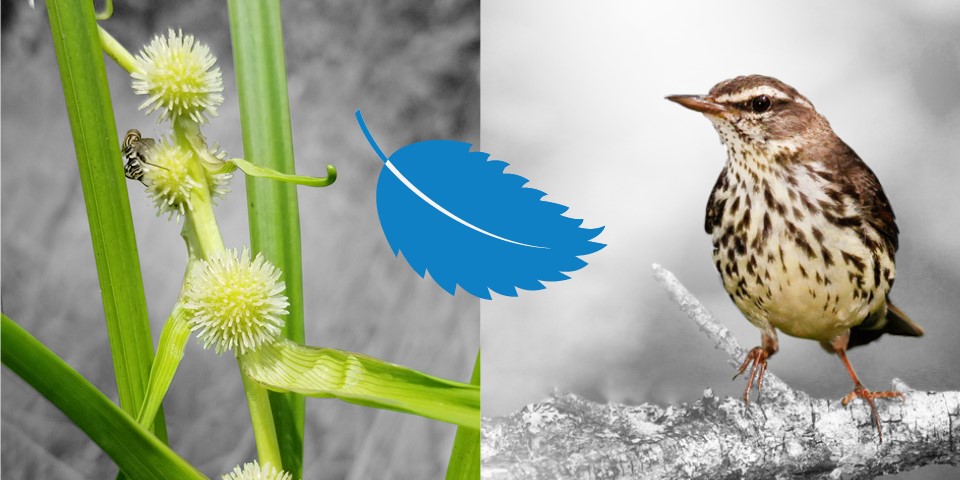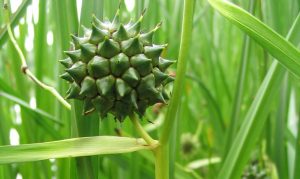The community has chosen two emblems from the watershed’s rich biodiversity to represent Ruisseau Jackson Protected Natural Area (RJANP): the broad-fruited bur-reed and the northern waterthrush.

Ruisseau Jackson emblems: the broad-fruited bur-reed (rubanier à gros fruits) and the northern waterthrush (paruline des ruisseaux). Credit for the northern waterthrush: Jacques Bouvier.
EMBLEMATIC PLANT
Neither too rare nor too common – definitely magnificent!
Five species of plants were identified as potential emblems for our organization, and a vote was organized to choose one.
The winner was announced on November 10, 2019: Sparganium eurycarpum, the broad-fruited bur-reed (rubanier à gros fruits). This initiative was part of the upcoming 2020 International Year of Plant Health.
The broad-fruited bur-reed can be widely found in the RJANP area and is easily identified.
Underrated in illustrating the importance of nature conservation, the broad-fruited bur-reed grows in fragile environments like those surrounding Ruisseau Jackson: mature woodlands, dense stands and forested wetlands. Such areas are increasingly rare, and RJANP’s mission is to protect them. It’s no surprise that the presence of Ruisseau Jackson is very important, if not essential, for the survival of this plant.
EMBLEMATIC BIRD
Northern waterthrush: a unique species
The northern waterthrush can be easily identified by its song and is fairly common in the RJANP area.
The northern waterthrush is underestimated in illustrating the importance of nature conservation, inhabiting fragile environments like those around Ruisseau Jackson: mature woodlands, dense stands and forested wetlands. Such areas are increasingly rare, and RJANP’s mission is to protect them. It’s no surprise that the presence of Ruisseau Jackson is very important, if not essential, for the survival of this plant.
The northern waterthrush has very interesting biological, behavioural and physical characteristics. It stands out from other species in the area, even though it is very discreet. This forest species is migratory, so you won’t see it in winter. As with the majority of forest species, the northern waterthrush doesn’t have vibrant colours so is easily camouflaged in its dusky habitat.


